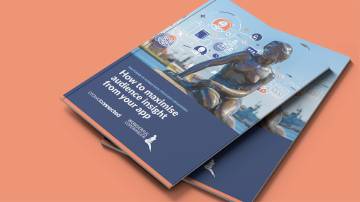How Best to Handle The Always-On Consumer

How best to handle the Always-On Consumer
Tackling the big challenge for today’s smart marketers
With smartphone penetration in Western Europe predicted to reach 67% the population by 2018 it’s obvious that we live in an always-on world. By 2020 there will be 7 times more connected devices than people in the world.
It’s an instant gratification environment increasingly populated by Millenials conditioned by all these amazing companies like Uber, Amazon & AirBnB to expect instantaneous services, continuous information. Businesses that already know a lot about what their customers want and need.
Who is the Always-On Consumer anyway?
The Always-On Consumer has taken the upper hand in the marketer/consumer relationship. Brands no longer control the customer journey from search to action (search, learn more, speak to us, buy). The customers control this journey. And they expect to have full control.
The Always-on Consumer conducts their own research, using social media and search engines. They go at their own pace. They can engage with your brand at any part of their buyer journey and their decision-making process is not always linear.
Imagine a man standing on the top of a mountain with his mobile phone. We don’t know what he’s doing on his phone. He might be on Instagram, taking a selfie on Snapchat, or chatting to his wife on Facebook. Or he may be just browsing the web for cool snowboard gear or even getting ready to ski down the mountain.
But as soon as he engages with our brand, we need to be ready to understand the context of his situation, so that we can gain a better understanding of his behaviour and provide real-time and relevant information. Whenever he needs it, whenever he wants it.
To be winners, companies must distinguish themselves by delivering timely and relevant information to their target customers whenever those customers want to engage. That’s the key characteristic of the Always-On Consumer.
According to a study from MarketingProfs:
• 49% of consumers are aware that the company collects data, but don’t know how to trade it for value in return. • 64% say they are interested in future technology that filters out irrelevant content or messages. • 39% of consumers are happy for brands to track & analyse data to help optimise shopping or services. • 57% say they are much more likely to pay attention to communications from companies when they chose the right time and context to reach them.
A study done by Accenture revealed that 78% of customers receive a fragmented experience as they move from channel-to-channel; while research done by Blue Research showed that 94% of consumers and prospects discontinue relationships because of irrelevant ads or promotions.
Keep in mind:
1. The Always-On Consumer wants to be recognised. At every touch point, marketers need to know who these prospects are, as well as what they want.
2. The Always-On Consumer wants to be treated as an individual. Personalised, relevant content, messaging and offers are a must and marketers need to focus on the things the consumer cares about and speak in a voice with which they can relate.
3. The Always-On Consumer wants to have it easy. So provide a seamless brand experience across multiple channels.
4. The Always-On Consumer wants to have a voice. Give them the tools to enable them to share their thoughts.
So marketing thinking needs to change to accommodate the Always-On consumer.
Think on-going conversation, not campaign
In the analogue age of traditional media, brands spoke and consumers listened.
Today, marketers need to shift from campaigns to conversations. They need to stop focusing on standalone campaigns but instead concentrate on optimising a group of cross-channel interactions that, when added together, create an individualised, contextual and relevant experience to the consumer.
After the launch of a new annual festival, for example, the marketing teams cannot just say: “Sorry, our Twitter account is now closed, see you next year.” Engagement and listening to customers happen 365 days/24 hours a day.
Think agile, not waterfall marketing
Long gone are the days when marketers had to book media campaigns months in advance.
Today’s marketing teams need to experiment, measure and change quickly to compete with the ever demanding consumer landscape. Always-on means businesses need to make data-driven decisions.
Always-on means communicating with customers as individuals, Communicating what they care about. And communicating across multiple channels in real-time.
Brands need to become and think like a digital publisher. What’s needed is relevant content and automation.
Think pull, not push
Rather than pushing out information blindly to customers, smart marketers are adopting an approach that responds specifically to their activities and interests.
Out with old of “hit & miss” marketing. Of sending out an email blast or ‘pushing’ a digital banner ad to the biggest audience you can find, hoping that some of that sticks and someone will come and buy from you. Doing this over and over again and hoping you get enough responses.
In with new – listening and understanding the “rhythms” of different types of consumers enable you to anticipate and provide something in advance of the consumer wanting to find it. Doing this within context (time, place, location, emotion) is the key here.
Use technology to help
IIt’s not easy and there’s no magic bullet.
Less than 5% of marketers believe they are managing experiences for an always-on consumer, according to a study from SmartInsights.
Sounds familiar?
Only 15% of companies have advanced analytics, processes, and tools to engage with the Always-On consumer.
So there’s significant room for businesses to understand and leverage technology to improve the experience and delight the customer.
At Crowd Connected, for example, we track movements of individuals and use that to enable contextual, real-time and relevant messaging for businesses operating events, at venues, stadia, in fact everywhere where large crowds come together. All designed to enhance the customer experience.


